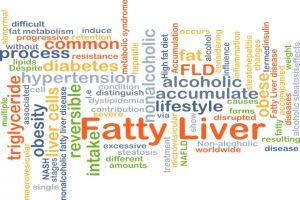
Lead study author Dr. Hannes Hagström explained, “We suspected that steatosis, activity, and fibrosis were important to overall risk, but we wanted to validate their impact on mortality over a long-term follow-up period through a validated and simple scoring system. This new analysis is vital in showing the link between severe non-alcoholic fatty liver disease and mortality, which is an important measure, given that this is the most common liver disease worldwide.”
The researchers used data from 139 patients with NAFLD. All the biopsies were classified using the new SAF scoring system. Data on overall mortality was taken from a national population register. People were followed up on average for 26 years.
At baseline, 69 patients had severe NAFLD and 35 patients had mild to moderate condition. Of the 70 subjects who died during follow-up, 59 percent were previously classified as having a severe form of NAFLD.
Professor Laurent Caster explained, “This long-term study demonstrates the importance of having sufficient follow-up periods for patients with NAFLD. This is an important step forward for the medical community in being able to identify the patients who are at most risk of death from the disease.”
New NAFLD guidelines
New guidelines have been released on non-alcoholic fatty liver disease, suggesting that obese children aged nine to 11 be screened for NAFLD. The American Academy of Pediatrics outlined 27 new guidelines regarding the treatment, diagnosis, screening, and long-term care of NAFLD.
In the report, the authors explained, “It has rapidly evolved into the most common liver disease seen in the pediatric population and is a management challenge for general pediatric practitioners, subspecialists, and for health systems.”
“Screening for NAFLD is appropriate because it can be detected prior to the onset of irreversible, end-stage liver disease. Identification of children with NAFLD is important because effective treatment is available.”
Children will be required to undergo additional testing, including biopsies, to check for the presence of fat deposits and rule out other conditions.
Treatment options for NAFLD include dietary changes and increasing physical activity levels. Based on the guidelines, “no currently available medications or supplements are recommended to treat NAFLD because none have been proven to benefit the majority of NAFLD patients,” the authors wrote.
Only certain adolescents with severe health issues should be considered for bariatric surgery.